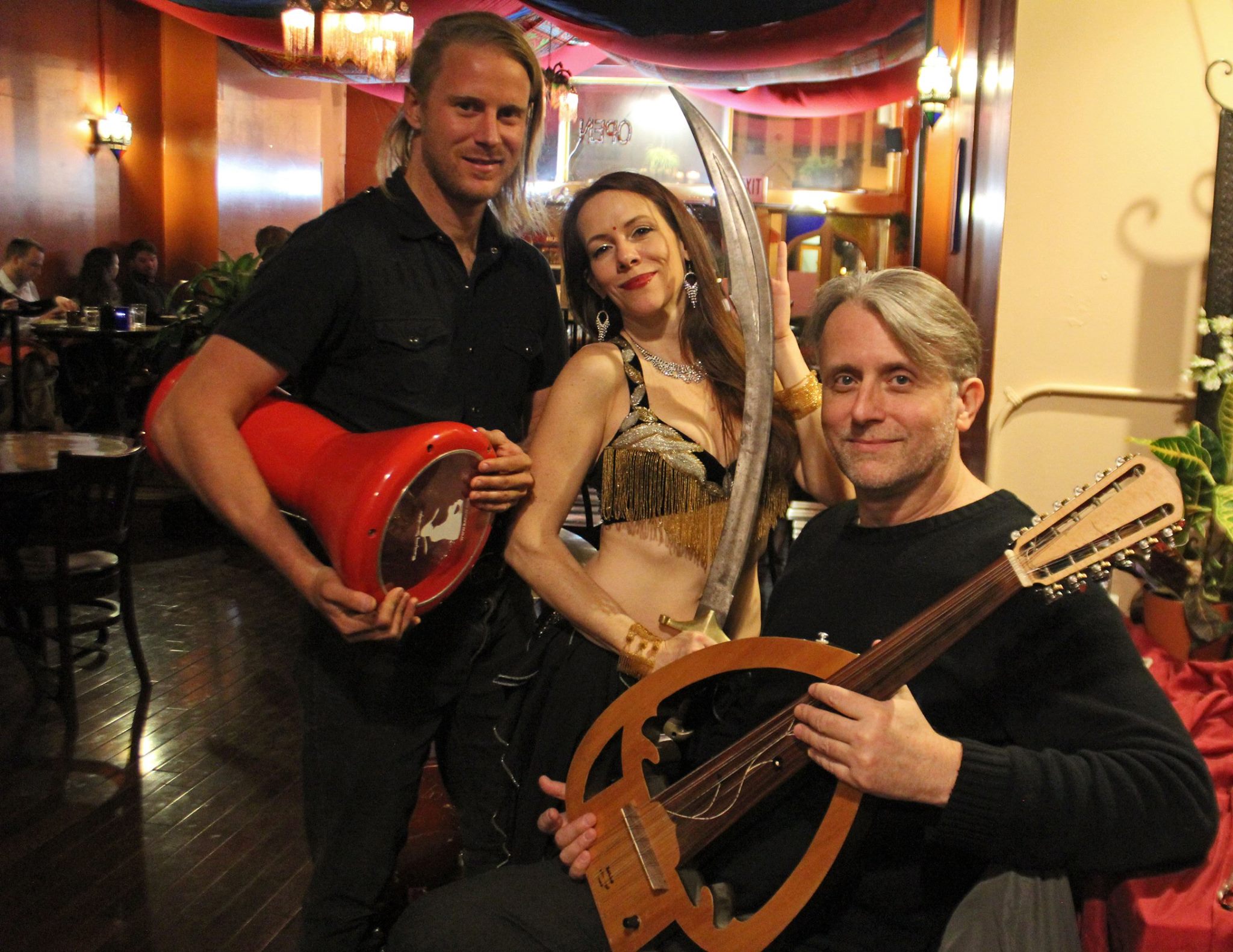ABOUT
It all started many years ago, back in an elementary school music class in the Atlanta suburbs. One day as a change from our usual routine of singing the blander top hits of the day, the teacher brought in a new album for us to listen to. We all groaned when she told us it was classical music, but as she talked more about it I was intrigued. It was called Switched-On Bach and it was classical music played by Wendy Carlos on a new electronic instrument called a synthesizer. There was still some groaning, but those of us who were Star Trek fans (a new TV show at the time) were paying attention.
Then the music started. Thinking back on it now, it’s hard to describe that experience. Today we can do pretty much anything we want to with sound. You want a sound that morphs between a bagpipe and a backwards bullfrog? No problem. There are new sounds in almost every pop song you hear. Not so back then. Almost every song we heard on television, the radio or our record players in those days was created from the same limited tonal palette. Not so with this album. It was ancient music played on an instrument from outer space and it was made from sounds we didn’t even know could exist.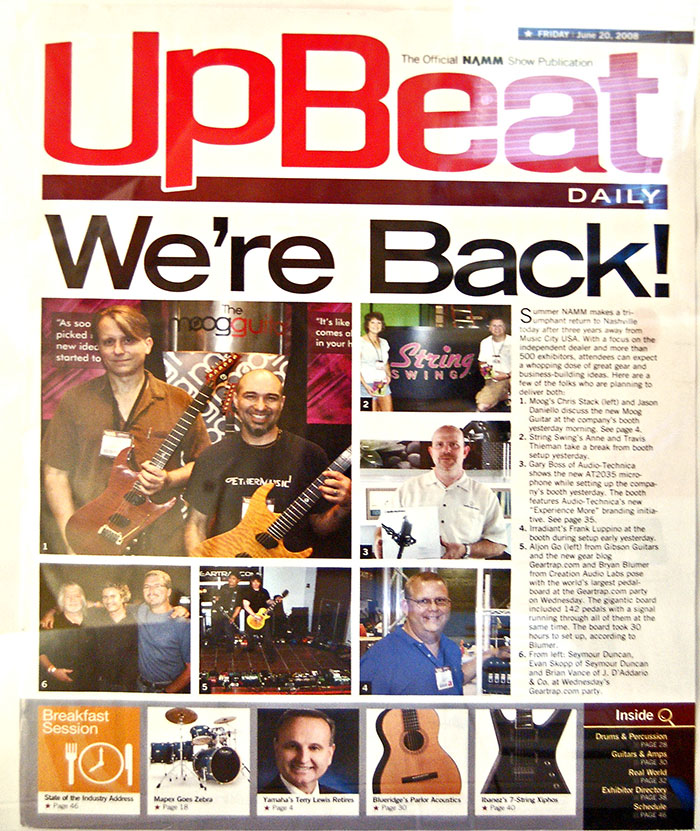
The teacher told us about Bach and counterpoint. I was so deeply engrossed in the music that I only half heard her, and for years I thought that counterpoint was a characteristic of electronic music, not baroque music. She then told us about how the music was created with the Moog synthesizer. That name even sounded like it came from outer space. This was obviously the coolest thing in the world. Not long afterwards I saw Micky Dolenz playing one on The Monkees Saturday morning TV show. You could play more than just classical music on a synthesizer? Now we were really on to something.
I should mention that my scholastic achievements up to this point had been less than stellar… far less than stellar, actually. My report cards usually contained an equal sprinkling of C’s, D’s and F’s. My sisters were both making straight A’s. I just was not interested in much that they were teaching in school those days. I’m not sure why diagramming sentences didn’t appeal to me and maybe I would have been more interested in the main rivers of India if like now, I actually knew some Indians. Unfortunately, inspirational experiences like the Switched-On episode were pretty rare for a couple of years. The next big one came along when I was in the 10th grade in 1973. A friend loaned me an album he thought I would like. It was Close To The Edge by YES.
This one peeled my ears open even wider than Switched-On Bach had. Here was a Moog synthesizer again. This time it was not just making new sounds, but it was playing a kind of music that I never imagined was possible. That Bob Moog guy was still making cool stuff. The music was built on elements of rock but contained so much more… classical, spiritual, even ragtime. More than anything, the use of these new electronic instruments opened my eyes to the possibilities of using technology to create works that embodied new artistic goals and new aesthetic philosophies. Suddenly, anything was possible.
Along with this new genre of progressive rock, the success of Switched-On Bach spawned a whole new wave of electronic realizations of classical music compositions. Japanese synthesist Isao Tomita’s Snowflakes Are Dancing showed that synthesizers (in this case, another big Moog modular) in classical music were not just limited to baroque precision; they were also the perfect tools for the performance of Claude Debussy’s 20th century impressionistic tone poems. Tomita’s follow-up recordings of Stravinsky’s Firebird Suite, Mussorgsky’s Pictures At An Exhibition (also covered by prog rockers Emerson, Lake & Palmer) and Holsts’ The Planets provided a painless introduction to modern classical music, a genre that I previously was not aware existed.
Before long, my friends and I were having discussions on topics ranging from orchestration to the social and historical context of these works. At that point I decided to learn all that I could about these Moog synthesizers. Unfortunately, this was well before the Internet. It was difficult to get current information about anything like this, especially in South Carolina where I was living then. I would occasionally see bits and pieces about them in the newspapers or on television, and one day I found an address where I could send off for some information on synthesizers made by another company called ARP. I read those brochures for the 2500, 2600, Odyssey and Pro Soloist from cover to cover, over and over again. There were a lot of concepts on them that I didn’t understand but even though these concepts looked a lot like math and science, I wanted to know more.
A funny thing started to happen then. My grades got a lot better. Where before I was barely passing each year, in the 11th and 12th grade I brought home a nice smattering of As and Bs, much to my parent’s relief. The education bug was planted but unfortunately did not yet have a strong foothold. I went to a local college for a year but could not settle on a major that interested me. This was 1976 and the phrase “personal computer” had not yet been coined. It was the age of large mainframes programmed with punch cards and while vaguely interesting; they were not obviously useful enough to hold my interest. I wound up dropping out after a year and entering the unskilled industrial workforce.
The bright point of this period was that it coincided with the first appearances of “affordable” synthesizers. The Minimoog, while affordable compared to the original modulars, had been out for a while at that point but was still financially out of my reach. Other new brands were showing up though. The Japanese were getting into manufacturing just about everything then, and synthesizers were no exception. It was with great joy that I was able to purchase my first synthesizer, a Korg Micro-Preset. It was laughably limited by today’s standards. Actually, it was laughably limited by late 70s standards, but it was mine and strange sounds began emanating from my house, a tradition that would continue for the rest of my life.
It wasn’t long though before Korg came out a slightly more advanced synth and it was time to sell my Micro-Preset and buy a Korg 770. Any one who has used computers for any length of time should have no trouble guessing where this trend was heading. By then I was jamming with like-minded friends and we formed a couple of unknown progressive rock bands. South Carolina in the 70s was a stronghold of southern rock and we didn’t get many gigs, but we kept playing because we loved the music. Seeing YES in Columbia, SC on the Relayer tour was an almost religious experience for me. Lead singer Jon Anderson playing a Minimoog with one hand while he played a harp with the other is a sight that sticks with me to this day. Getting to hang out with the band after the show was pretty cool too.
Around this time Moog came out with a new wonder, the Polymoog. A rep from the factory did a demo tour and I got to attend and play one at a local recording studio owned by the band Marshal Tucker. The Polymoog blew me away. It had achieved what was then a holy grail of synthesis… polyphony. It is the first synth on which I ever played a chord and it had another (new to me) capability that I loved and still use quite a bit to this day; sample and hold modulating the filter cutoff frequency. Before long it was time to expand my keyboard setup again. Time to step up my game a bit so I took out a sizable (for me) loan and bought a pair of new keyboards; a Moog Micromoog and a Crumar Performer string and brass “ensemble”. These were followed by a Yamaha electric piano and a Roland SH-101.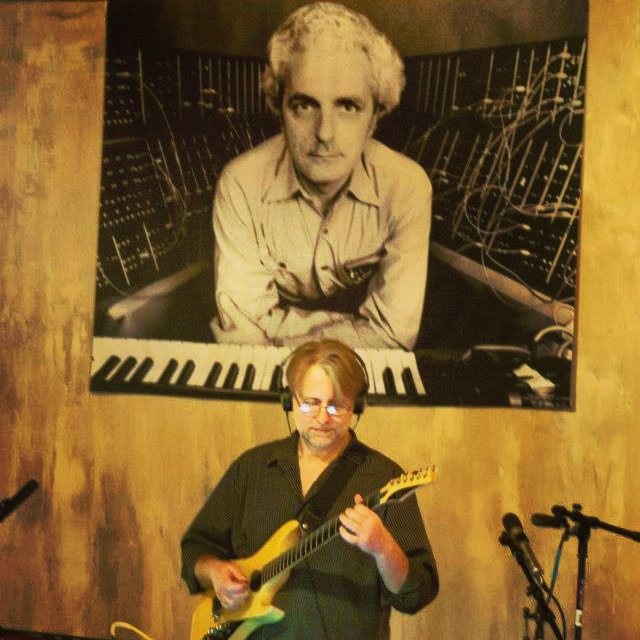
I had my first real multi-keyboard rig, my own mini version of Rick Wakeman’s setup on his album, “Six Wives of Henry VIII” with the Micromoog being the crown jewel. Then things started to get really interesting… before I knew it I had a pair of polyphonic synths, a Korg Poly61 and a Roland JX-3P (my first MIDI synth). A Commodore 64 with a Sequential Circuits sequencer cartridge took things to the next level. Yamaha then came out with the DX-7 and I wound up buying almost every 4-operator FM synth that followed.
At this point I had been doing unskilled labor in a zinc die-casting factory for about five years. That builds character (and muscles), but not much else. I was 24 years old and realized that I needed to do more with my life. Luckily, at this point I had developed a strong love for creating electronic music. I was curious about how it all worked and when I discovered that a local technical college had an electronics program, my next step was clear.
I enrolled in an industrial electronics program and soon I was using a Voltmeter, learning Ohm’s Law, the resistor color code, wiring, soldering and a lot of other useful skills. I started to understand what things like “frequency” meant and before long, I knew what the filters on my synthesizers were actually filtering. I realized then that not only were my electronics studies helping me understand my musical endeavors, but also more importantly, my musical endeavors were helping me understand electronics.
This synergy was not just limited to electronics. In trigonometry class, when we studied adding sine functions we would graph them and see the results. Unlike most of my classmates I had the advantage of being able to go home and add sine waves on my synthesizers and hear the resulting sound. I would also hook them to my oscilloscope (no home should be without one) for additional visual confirmation. This audio-visual feedback was an incredible learning experience. Being able to change the frequency and amplitude of the waveforms on the fly and immediately see and hear the result made me feel very at home with some rather abstract mathematical concepts. At that point, there was no looking back.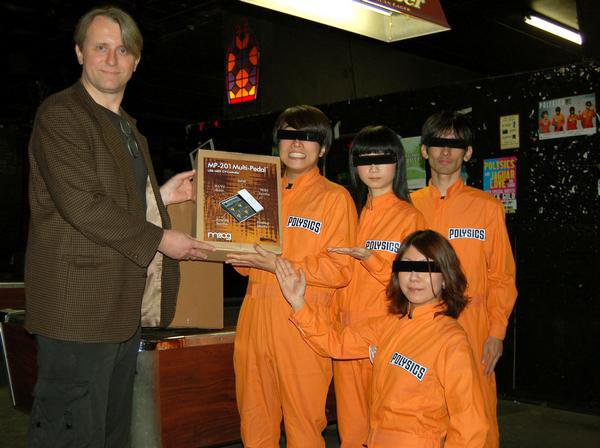
At the end of the first quarter I became the first student ever to transfer from Industrial Electronics to Electrical Engineering Technology. Usually transfers were failing engineering students going the other way. The personal computer age was then beginning in earnest. In addition to my Commodore 64 (and Yamaha CX5M) I acquired a new marvel, the first Macintosh. It only had 128k of RAM and no hard drive, but it screamed loud and clear that a new age of computing was here and with the increasing number of musical application for computers, I had ample incentive to pay close attention in my programming classes.
By the time I received my degree, I had made the dean’s list five times and had been invited to join the engineering honors fraternity, Tau Alpha Pi. I was ready to join the real world… and buy some more synthesizers. South Carolina in 1986 was not a hotbed of the high tech industry, but I was very fortunate that my good grades and Macintosh experience enabled me to land a job at Computer Dynamics, Inc. CDI was an industrial computer manufacturer and working there gave me indispensable hands-on experience in electronics design and manufacturing. After a few months as a technician, I joined the engineering department as a printed circuit board (PCB) designer and spent the next ten years deep in the hearts of these machines.
CDI products found homes in some pretty interesting applications. I was proud that my designs were part of the latest medical equipment, industrial processes and even one of the first flat panel display desktop computers, but I was on cloud nine when the sales manager told me that one of my babies was going up on a space shuttle. Like all of my designs, I had embedded my initials in the circuitry and being a longtime Star Trek fan, I thought my handiwork going into space was probably the coolest thing that would ever happen to me.
I was wrong. One day, I saw an article in the local newspaper that said that Bob Moog was teaching at a college in Asheville, NC (a city about an hour away) and was giving a public lecture in a few days. Holy SynthCakes!!!!!! Bob Moog… THE Bob Moog… the guy whose name was on my Micromoog, the guy who made the synths on Switched-On Bach, the guy who Rick Wakeman had on speed-dial (I think they had speed-dial then)… THE Bob Moog lives about an hour away! Yeah, I was pretty sure I was going to be able to attend that lecture. And attend I did… I don’t clearly remember everything he talked about, but I think it was a general overview of electronic music from his unique vantage point. I remember him playing the Theremin and also demonstrating a musical concept on a non-Moog keyboard. I believe it may have been a Casio CZ-1.
There was a question and answer session at the end and I remember someone rather rudely asking him if he was behind the times because he hadn’t jumped on the digital bandwagon. Bob very graciously answered him and explained that analog and digital were both great tools for creating sound and that analog was just what he knew better. After the lecture, Bob was hanging around talking to people and helping to clear the stage. I worked up my nerve and went up and introduced myself. After thanking him for creating all that was good and holy in my universe, I gave him my card and mentioned that I was a printed circuit designer and that if he ever needed one to give me a call. He called me the next morning.
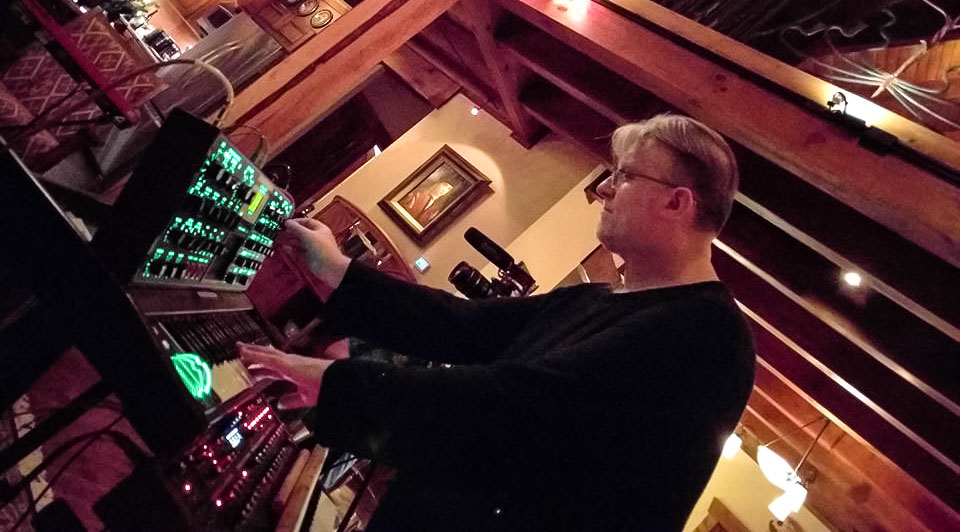
I leave it to your imagination to picture my reaction when I picked up the phone and heard “Hello Chris, this is Bob Moog.” He mentioned that he had a custom project he was working on and asked if I would be interested in helping out. I believe my answer was a very respectful paraphrase of “Oh, hell yeah!” A day or two later, I visited Bob at the Big Briar facility in Asheville. He gave me the rundown on a custom project he had in the works, the Multi Touch Sensitive (MTS) keyboard. I was fascinated, and since much of my work then at CDI involved combining PC hardware with flat panel displays and touch surfaces, it was somewhat familiar ground for me. I left with a schematic, some notes and part samples.
The MTS is a basically a controller keyboard that gives the player the power to modify numerous aspects of sound by translating the position of the player’s fingers on the keys into control information. The possibilities of this left me dumbfounded. This was long before the age of the iPad and it was more than a decade before the touch surface on the Moog Voyager. This was to my knowledge one of the first musical applications of this technology and to say I was excited to be a part of it is a vast understatement.
The first step for me was a process called “schematic capture”. In it, I took Bob’s hand-drawn schematic and recreated it with Computer Aided Design (CAD) software. The schematic capture process created a database of all the parts and connections in the design and I then imported that into a related PCB design program and “drew” the circuit board. There were three PCBs in the MTS and we did them one after the other. This was in the dark, ancient days before either of us had Internet access or email addresses (or even cell phones), so the majority of our subsequent communications were through landline telephone calls and Fedex packages. Electronic design is a very detailed process and there are a thousand things that need to go right. I’m sure I enjoyed more than one opportunity to tell friends “Excuse me for a moment… I’ve got to call Bob Moog.”
He was always very patient with my questions and before long all three boards were done. As in most electronic designs, creating the PCBs was only a fraction of the work required to finish the project. My part was done and Bob was on to the next phase. Since the MTS was a custom creation, it was not like I could go down to Guitar Center and check one out after it was finished. I never saw one until many years later when I was the Marketing Manager of Moog Music and the Bob Moog Foundation had one on display in 2010 at the NAMM Show. That’s quite a jump, and I probably should explain how I got from point A to point B.
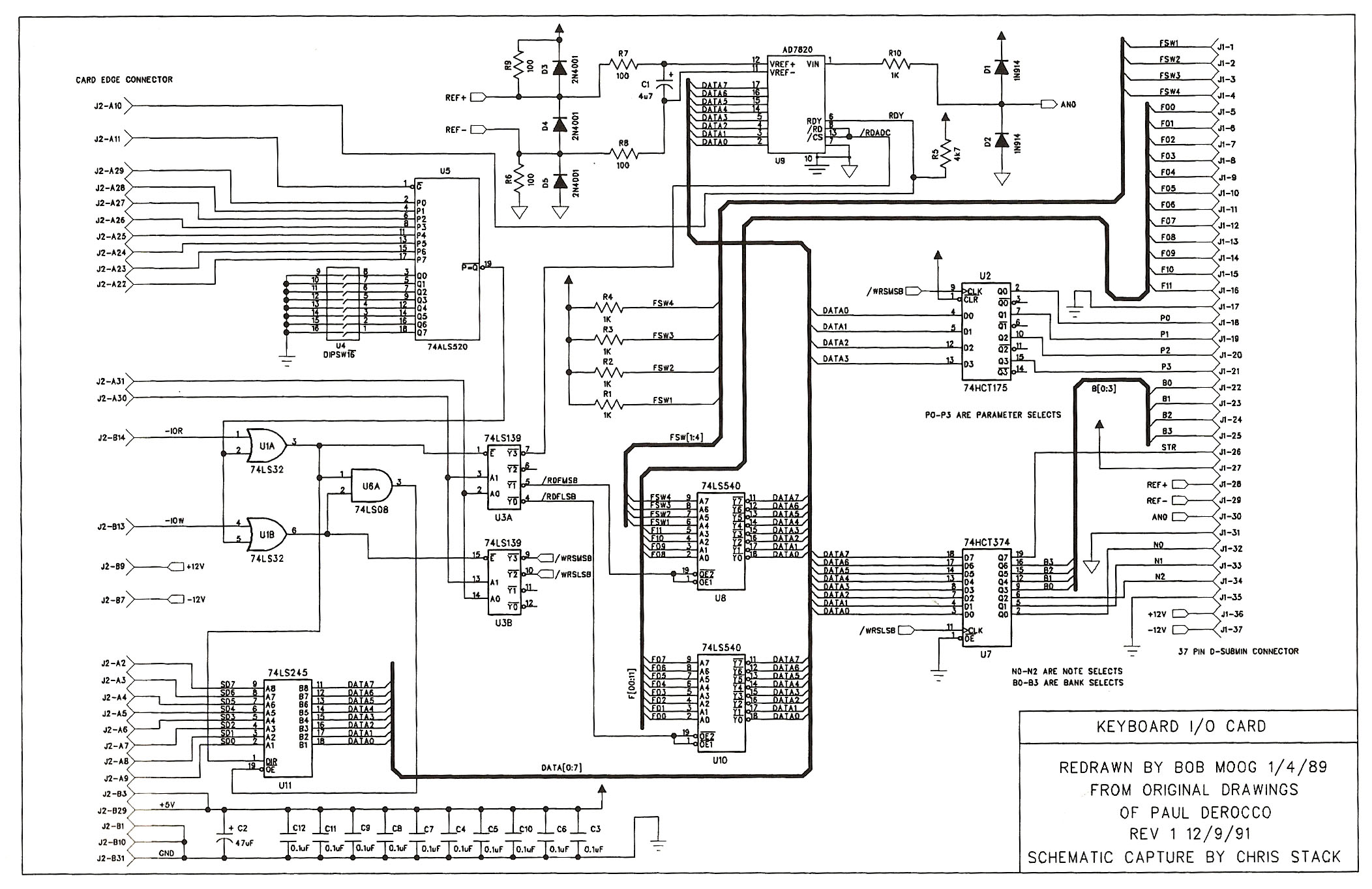
During my ten years at CDI while the vast majority of my time was spent in electronics design and manufacturing at one point the marketing department came to me and basically said “if you can figure out this CAD software, maybe you can help us with PhotoShop” (actually, initially Aldus PhotoStyler). More and more marketing tasks began to slip into my workload. After ten years at CDI, I went to work for dB-tronics, a cable television electronics company founded by my college lab partner.
Where CDI’s products were made primarily of dense, tightly packed digital circuitry, dB-tronics’ offered a different challenge; high frequency analog circuitry. My synthesizer experience again thankfully gave me a boost there. In addition to high-frequency amplifiers and fiber optics, the majority of dB-tronics products were analog filters. I spent the next ten years in various positions including project manager, manufacturing manager and engineering manager, but the majority of my time there was spent as marketing manager.
During this time Bob contacted me about working on a new project; the Ethervox MIDI Theremin. Unfortunately, much more of my time was taken by my “day job” at that point and all I could fit in was the schematic capture part. I introduced Bob to Barry Darnell, another PCB designer at CDI. He completed the Ethervox PCBs and wound up doing a number of other projects for Bob and Big Briar.
At that point, even though I was still living in South Carolina, I was making the hour drive to Asheville quite often. The culture there was vastly different and before long most Ashevillians saw me so much they thought I lived there. I would run into Bob from time to time and we would always exchange a few word and random synth-talk. Music performance was starting to become a bigger part of my life. People in Asheville were much more open to a wider variety of musical experience and I started to play quite a bit of music there. I developed a love of electronic Middle Eastern music through listening to albums like Peter Gabriel’s Passion and David Byrne and Brian Eno’s My Life In The Bush Of Ghosts and somehow from there I wound up with a regular gig playing traditional acoustic instruments like the oud (an Arabic fretless lute) for belly dance shows.
One Monday morning at work after a late night music gig in Asheville, I got an email from Barry telling me that Bob had died. I knew that he was sick, but had no idea that it was terminal and the news came as quite a shock. It also set in motion one of the stranger coincidences of which I have ever been a part. That is a whole other story, and you can read about it here.
http://createdigitalmusic.com/2012/05/good-vibrations-a-story-about-remembering-bob-moog/
I worked at dB-tronics and related companies for twelve interesting years. One day out of the blue, I got a call from an electronic components sales rep with whom I had worked since the CDI days. He also worked with Moog Music and heard they had an opening for a marketing manager. He knew I was heavily into synthesizers and when he asked me if I would be interested, once again my answer was something along the lines of “Oh, hell yeah!”
Long story, slightly shorter, in 2007 I became the marketing manager of Moog Music. Part of my job interview took place in the same house where you see Bob living in Hans Fjellestad’s famous documentary. The sense of my life coming full circle was overwhelming, in a good way. I went to work at the factory on Riverside Drive in the old cotton mill. I used to joke that it was the only place in the world where you could stand in one spot and see a Gold Record, a Grammy and a forklift.
Even though at that point I had been collecting synthesizers longer than anyone in the company and probably had owned more than everyone in the company, I had veered down a digital path in my instrument acquisitions. The coolest things in my setup at that time were a pair of Kurzweil K2000s that Bob Moog had helped develop, but it was obviously time to get back to my analog roots, and what better place to do it. My cherished vintage analog Electro-Harmonix Vocoder was soon joined by a Voyager, Little Phatty, Slim Phatty, Moog Guitar, Etherwave Plus Theremin, a Multi-Pedal and ten Moogerfoogers. If only I had time to play them.
The next few years were a wild combination of long, hard hours at work punctuated by the most amazing things you could ever imagine. One day I might be pulling an all-nighter getting a press release package ready and the next day Lou Reed is in my office checking out my Laurie Anderson tour poster. Another day I’m leaning tradeshow displays against a wall in the loading dock, the next thing I know, Matisyahu is saying his prayers at that same wall prior to a video shoot. Once while working on a Saturday afternoon (a not-uncommon occurrence) I posted to Facebook that I could hear Medeski, Martin & Wood coming from the next room. Someone replied asking if it was iTunes or Pandora. My response was something like “neither… Medeski, Martin & Wood are in the next room.”
While I was not part of the Bob Moog Foundation, I still had an opportunity to see their work up close. There was always a new wonder waiting to be found as they dug their way through Bob’s archives. Rare documents and exotic prototypes were common finds. One day while visiting a cataloging operation, I got to hold in my hands something that was really special. It was the reel-to-reel demo tape that Wendy Carlos used to get the Switched-On Bach record deal; a synthesized version of the song What’s New Pussycat? As I held it, I was for a moment again that same 7th grade kid whose ears had just been blown wide open by sounds he never knew existed and I knew that a sense of wonder never goes away.
After a few years at Moog, it was time to move on to new adventures. Now, I am marketing director for Vo Inventions, the creators of the Vo-96 Acoustic Synthesizer (voinventions.com) and work in multimedia for the abstract painter Jonas Gerard (jonasgerard.com). I also run the blog/YouTube channel ExperimentalSynth (experimentalsynth.com), where I have the absolute freedom to explore all aspects of electronic music and a variety of related topics.
Connections have always been an important part of my life, and on ExperimentalSynth I try to instill the magic of creating something new by experimenting with connections. What happens when you connect your cell phone to a set of Moog Bass Pedals or a synthesizer to a $1,000,000 Star Wars-era analog video effects processor? There’s only one way to find out and over 40 years ago Bob Moog planted the seeds that made me want to know.
Darwin Grosse Podcast Interview
